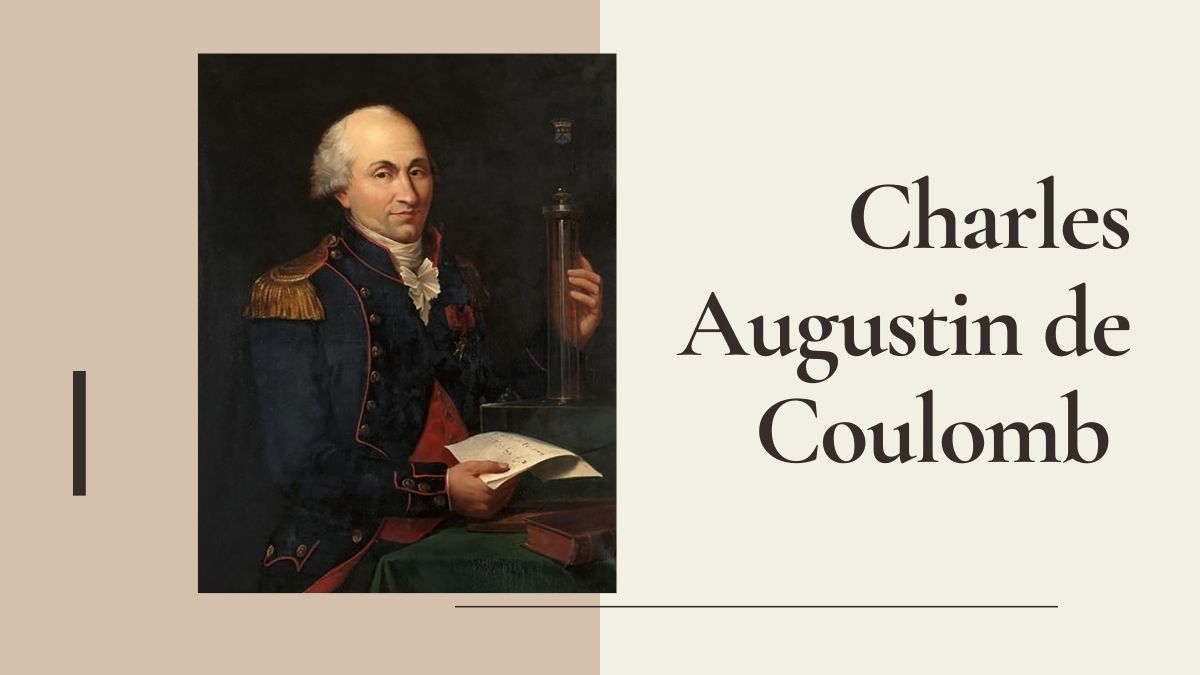
Charles-Augustin de Coulomb was a renowned French physicist and engineer who made significant contributions to the field of electromagnetism. Born on June 14, 1736, in Angoulême, France, Coulomb dedicated his life to understanding the forces that govern the interaction between charged particles.
Throughout his career, Coulomb conducted groundbreaking experiments and formulated fundamental laws that continue to shape our understanding of electricity and magnetism to this day. His discoveries range from the development of Coulomb’s Law, which describes the electrostatic force between charged objects, to his work on torsion balance, which allowed him to measure the strength of electric forces accurately.
This article delves into the intriguing life and scientific accomplishments of Charles-Augustin de Coulomb. From his early education to his groundbreaking experiments and the impact of his work on modern physics, we will explore 14 fascinating facts that showcase the brilliance and lasting legacy of this remarkable scientist.
Key Takeaways:
- Coulomb’s work in electromagnetism laid the foundation for modern electrical theory, including Coulomb’s Law and the concept of electrical capacitance. His discoveries continue to shape our understanding of electricity.
- Despite not receiving recognition during his lifetime, Coulomb’s research influenced the development of electrical engineering and inspired future scientists. His legacy lives on as a source of inspiration for aspiring physicists.
Coulomb is known for his significant contributions to the field of physics.
Charles-Augustin de Coulomb was a French physicist and engineer who made groundbreaking discoveries in the realm of electromagnetism. His work laid the foundation for modern-day electrical theory.
Coulomb’s Law revolutionized the understanding of electrostatics.
Coulomb’s Law states that the force between two charged particles is directly proportional to the product of their charges and inversely proportional to the square of the distance between them. This law is fundamental in studying the behavior of electrically charged objects.
Coulomb conducted extensive experiments on friction and static electricity.
Coulomb’s experiments involved measuring the forces of attraction and repulsion between charged objects, furthering our understanding of the nature of electricity and the effect of friction on electrical charges.
Coulomb invented the torsion balance.
The torsion balance, also known as the Coulomb balance, was a device created by Coulomb to measure the forces of repulsion and attraction between charged objects accurately. This invention was pivotal in conducting precise experiments on electrostatics.
Coulomb was the first to quantify the concept of electrical capacitance.
Coulomb developed the concept of capacitance, which measures an object’s ability to store an electric charge. His work laid the groundwork for the development of capacitors widely used in modern electronic devices.
Coulomb discovered the laws governing the behavior of magnetism.
In addition to his contributions to electrostatics, Coulomb also explored the principles of magnetism. He established mathematical relationships that govern the force and behavior of magnets.
The unit of electric charge, the coulomb, is named after Charles-Augustin de Coulomb.
In recognition of his significant contributions to the field of electromagnetism, the International System of Units (SI) named the unit of electric charge after him. One coulomb is equal to the charge carried by approximately 6.24 x 10^18 electrons.
Coulomb’s discoveries paved the way for the development of electrical engineering.
By unraveling the fundamental properties of electrical charges, Coulomb’s work laid the foundation for the field of electrical engineering. His principles and laws are still actively used in the design and development of electrical systems and devices.
Charles-Augustin de Coulomb had a diverse career.
Before devoting himself to scientific pursuits, Coulomb served as a military engineer in France. His background in engineering provided him with a strong foundation for his later scientific endeavors.
Coulomb’s contributions were not widely recognized during his lifetime.
Although Coulomb’s work was groundbreaking, it was not until after his death that his contributions were fully acknowledged. Today, he is considered one of the great pioneers of modern physics.
Coulomb’s findings influenced other notable scientists.
Coulomb’s laws and principles had a profound impact on other renowned physicists, including Michael Faraday and James Clerk Maxwell, who further expanded upon his work and made significant advancements in the field of electromagnetism.
Coulomb’s research extended beyond physics.
While best known for his contributions to physics, Coulomb also made important advancements in fields such as mechanics and engineering. He published numerous papers on a wide range of scientific topics.
Charles-Augustin de Coulomb’s legacy continues to inspire aspiring scientists.
Today, Coulomb’s work serves as a source of inspiration for young scientists around the world. His pioneering spirit and dedication to scientific inquiry have left an indelible mark on the world of physics.
Coulomb’s principles form the basis for our understanding of electricity and magnetism.
The principles and laws established by Charles-Augustin de Coulomb continue to be essential in the field of electromagnetism. His work provides the framework for understanding the behavior of electrical charges and magnetic fields.
Conclusion
In conclusion, Charles-Augustin de Coulomb was a remarkable figure in the field of physics. His contributions to the study of electromagnetism and friction laid the foundation for many modern scientific principles. From his groundbreaking experiments with electrical charges to his mathematical formulation of Coulomb’s Law, Coulomb’s work continues to shape our understanding of the physical world.Not only was Coulomb a brilliant scientist, but he was also a dedicated engineer and a respected military officer. His diverse background and expertise allowed him to explore various scientific phenomena and make significant discoveries that still impact the field today.Through his experiments and calculations, Coulomb played a pivotal role in advancing our understanding of the forces that govern the behavior of electric charges. His work demonstrates the power of scientific inquiry and the pursuit of knowledge.In summary, Charles-Augustin de Coulomb’s life and work serve as a testament to the extraordinary contributions that individuals can make to the world of science and innovation.
FAQs
1. Who was Charles-Augustin de Coulomb?
Charles-Augustin de Coulomb was a French physicist, engineer, and military officer. He is best known for his work in the field of electromagnetism and the formulation of Coulomb’s Law.
2. What is Coulomb’s Law?
Coulomb’s Law states that the force between two charged objects is directly proportional to the product of their charges and inversely proportional to the square of the distance between them.
3. What were Coulomb’s major contributions to physics?
Coulomb made significant contributions to several areas of physics, including the study of electrical charges, friction, and magnetism. His experiments and calculations laid the foundation for our understanding of electromagnetism.
4. Was Coulomb only a scientist?
No, Coulomb had a diverse background. He was also an engineer and a military officer. His engineering expertise allowed him to apply his scientific knowledge to practical innovations.
5. How did Coulomb’s work impact the field of physics?
Coulomb’s work revolutionized the study of electromagnetism and laid the foundation for future advancements in the field. His principles and laws are still widely used and form an integral part of modern physics.
Coulomb's groundbreaking work in electromagnetism continues to shape our understanding of the universe. His law of electrostatic forces, magnetic repulsion principles, and pioneering research into electrostatics laid the foundation for modern physics. Curious minds eager to explore Coulomb's scientific legacy further should consider delving into the astounding facts surrounding his eponymous law, mind-blowing insights into magnetic repulsion, and captivating details about his electrostatics research. These fascinating topics promise to illuminate the genius behind one of history's most influential physicists, offering a deeper appreciation for the profound impact Coulomb's discoveries have had on our world.
Was this page helpful?
Our commitment to delivering trustworthy and engaging content is at the heart of what we do. Each fact on our site is contributed by real users like you, bringing a wealth of diverse insights and information. To ensure the highest standards of accuracy and reliability, our dedicated editors meticulously review each submission. This process guarantees that the facts we share are not only fascinating but also credible. Trust in our commitment to quality and authenticity as you explore and learn with us.


